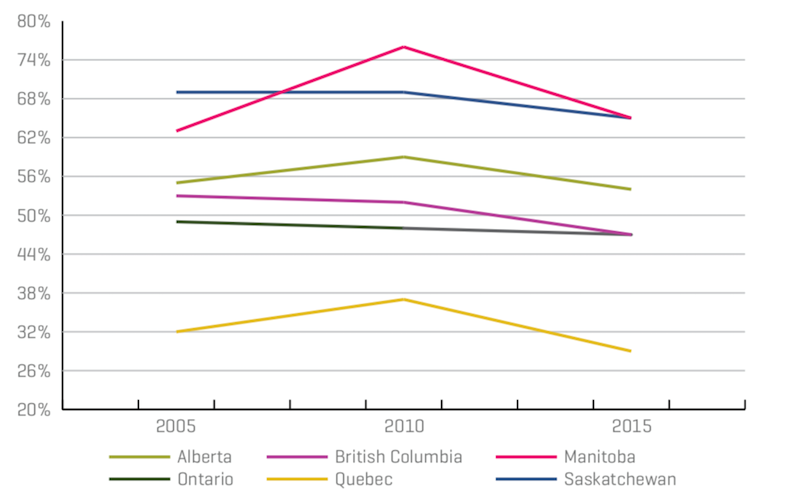Back in early July, the Assembly of First Nations (AFN) and the Canadian Centre for Policy Alternatives (CCPA) co-authored a report which revealed that almost half of First Nations children (47 per cent) in this country fall below the poverty line.
This study, titled “Towards Justice: Tackling Indigenous Child Poverty in Canada,”showcases a disparity between the conditions that Indigenous children live in and the national child poverty rate of 17.6 per cent.
The gap is even worse in Manitoba, which sports the highest child poverty rate in the country (64 per cent) for Indigenous children living on reserves. The only other province in the country that shares this same poverty rate is Saskatchewan.
Meanwhile, non-Indigenous, non-radicalized children register the lowest rate of child poverty at 12 per cent, roughly one quarter that of their First Nations counterparts.
“The findings of this report are shameful and underscore the urgent need to invest in First Nations children, families and communities,” said AFN National Chief Perry Bellegarde in a July 9 press release.
The AFN and CCPA came up with these statistics using data from the 2006 census, the 2011 National Household Survey and the 2016 census.
Even though conditions have marginally improved for Métis children and Indigenous kids living in large urban centres like Winnipeg, the study also highlights the fact that these poverty rates have remained largely unchanged throughout this stretch of time.
For example, Manitoba’s poverty rate for Indigenous children living on reserves (65 per cent) is almost identical to what it looked in 2006, although it does represent a big decline from the 76 per cent poverty rate from 2011.
“Canada has not been tracking poverty on-reserve and that’s one reason the situation is not improving,” said Bellegarde. “We need a combination of political will, action, cooperation among governments and sustainable investments in water, infrastructure, housing and education to help First Nations children succeed and get a fair start in life.”
The study’s authors even point to Quebec as an example of how the country can help bring about positive change.
According to the study, resource-revenue sharing between the provincial government and First Nations groups helped counteract federal underfunding, resulting in the lowest child poverty rate in the country (29 per cent) for Indigenous children living on reserves.
AFN and CCPA wrapped up their report by imploring the federal government to adopt a series of strategies if they are serious about closing the quality of life gap between Indigenous and non-Indigenous children.
These recommendations are: including reserves in annual income surveys, applying low-income lines to reserves, committing to a 50 per cent reduction in Market Basket Measure poverty on reserves by 2030 and supporting the self-determination of Indigenous communities both financially and jurisdictionally.
To read the report in full, please visit the official website for Upstream, the communications think tank that published this study on July 9.




